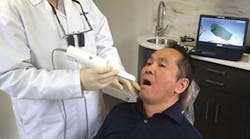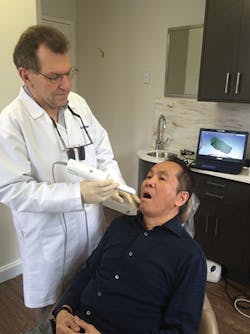Dentistry is moving from analog impressions and physical models to a digital environment where scanners are used to acquire representations of the dentition and surrounding soft-tissue structures.
There are certain principles that maintain the integrity in the way we practice dentistry. After being involved in digital restorative dentistry for almost 20 years, seeing its evolution as a practicing dentist, teaching others, and evaluating products, I have observed four underlying principles that, if adhered to, make this technology a superior way of practicing dentistry. The four principles that I speak of are:
- Accuracy: That is, the recording must be accurate.
- Collaboration: We must be able to share these records with other parties.
- Archiving: We must have a way of storing these records.
- Retrieval: We must have a way to easily retrieve and use the data.
From this I have coined the acronym ACAR.
ALSO BY DR. KAYE | What are the parameters that ensure success with digital dentistry?
Accuracy
Digital impressions must accurately capture the internal structures for the purpose of analyzing or fabricating a prosthetic device. These devices are so successful that laboratory technicians and dentists overwhelmingly report better-fitting prostheses, fewer adjustments on insertion, and significantly fewer remakes. (Our experience is entirely consistent with that.) Keep in mind that success is dependent on the quality of the data coming in. For example, attention to preparation design, margin integrity, and tissue retraction have become more important than ever.
Collaboration
Once we obtain a scan, how and who we share it with becomes as important as taking the scan. Most files are stored and communicated as an STL file (i.e., stereolithography or standard triangle language). The STL file can be shared by e-mail or data-sharing portals (e.g., Dropbox). Manufacturers host portals specific to their devices (e.g., 3Shape Communicate, 3M Portal, Romexis Cloud, Cerec Connect). Laboratories also may have proprietary portals to which dentists upload their files. An open "exchange" known as DDX (Henry Schein) that allows practices and labs to use the same portal seems to be an ideal way of dealing with different lab portals that have different functionality and can sometimes be difficult to use or may be limited to a particular device (closed system).
ALSO BY DR. KAYE | The iceberg illusion of implementing new technology: What to ask yourself
Archiving
Storing a physical model is limited by the physical space that the model occupies. Anyone who has a growing volume of stone models knows how cumbersome and often unmanageable record keeping can be. Storing scans can be done by backing up the STL files to a local drive in the office or remotely to a cloud storage device. As the number of scans increases, it is very important to have a system that offers scalable file space. Computer data is much easier to manage than physical models in general; the largest file that we would encounter is about 300 megabytes (MB) in size.
Retrieval
Being able to easily retrieve desired data is very important. I believe this is where a file management system that integrates with the practice management system is key. DDX integrates with many practice management software systems and particularly deeply with Dentrix, the most commonly used system. While DDX is a digital communication management system, it can also be used as a digital lab Rx.
In Dentrix, the patient and treatment data flows directly into the DDX Rx. The retrievable function acts in the same way we would look at digital radiographs or photographs in the patient's chart.
In addition, currently DDX integrates with a number of the leading digital devices. We can expect that to grow, as this is an open platform system. This allows the practice to keep track of all the scans, no matter what devices it uses, in one place. Currently DDX supports PlanScan (Planmeca), Trios (3Shape), and True Definition (3M).
ALSO BY DR. KAYE | How the use of digital technology is changing our patients' perceptions
Conclusion
Like anything we do in dentistry, our reliance on equipment, instruments, materials, or technology has direct consequences on the outcomes of our diagnosis and treatment. As we deploy these new modalities of treatment, we have to find new ways to evaluate if our objectives are being met and continue to be able to deliver the highest level of care to our patients.
Gary Kaye, DDS, FAGD, founder of the New York Center for Digital Dentistry, has practiced comprehensive dentistry in New York City since 1993. He graduated from Columbia University of Dental Medicine in 1993, where he received awards in endodontics, prosthodontics, and geriatric dentistry. Dr. Kaye consults with dentists and dental manufacturers and lectures on topics including ceramics, occlusion, and digital dentistry. He is on the guest faculty of Planmeca University in Dallas, Texas.







